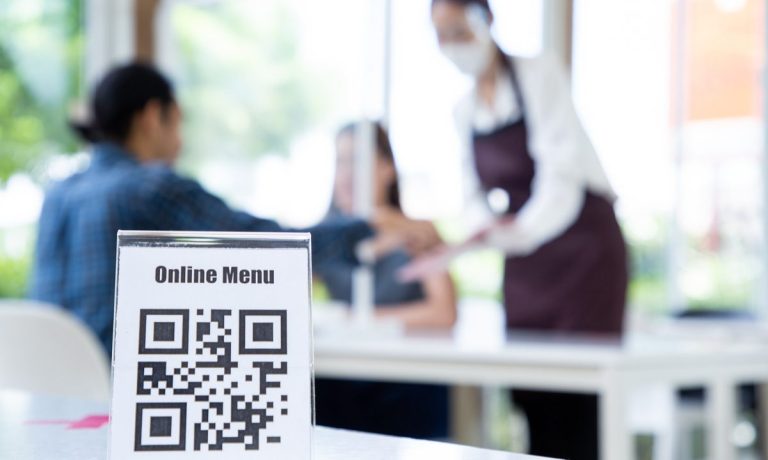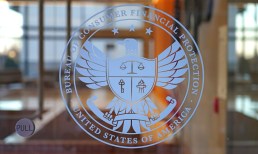As quick service restaurants (QSRs) put the pedal to the metal on digitization, utilizing new technologies to maximize their speed and convenience, full-service restaurants (FSRs) are challenged to take a more nuanced view of these innovations, called upon to identify which tools will provide additional value to their consumers and which will detract from the dining experience.
One such hotbed issue is that the QR code menu. Allowing consumers to view the menu and sometimes even to make a purchase on their own devices certainly has its benefits as coronavirus case numbers rise, minimizing contact and wait times. However, for restaurants aiming to facilitate a social experience and especially for those striving for a fine dining atmosphere, these digital menus can stand in the way.
“If you think about it socially, when you go to a restaurant on a date, you want to interact,” Michele Baker Benesch, president of Menu Men, a company that designs and manufacturers print and digital menus, told PYMNTS in an interview. “A waiter comes over, you place an order for maybe an appetizer, maybe a glass of wine, but there’s a dialogue between you. When you have a QR code, and you’re just looking at your phone, there’s no dialogue … It puts this weird awkwardness between people versus a total experience.”
The Hesitant Customer
While restaurant managers are gung-ho on QR codes and their potential to bring increased efficiency to the industry, consumers are less enthusiastic, research from PYMNTS’ 2021 Restaurant Readiness Index suggests.
The study found that, while nearly a third of restaurant managers reported believing that the introduction of QR codes enhancing end-to-end experiences will be key to restaurants’ future success, only 10% of consumers said the same. Similarly, operators were more than twice as likely as consumers to indicate that they believed that the ability to pay with QR codes will be important in the long run.
Advertisement: Scroll to Continue
Read more: QSRs’ Lagging Loyalty-Reward Investment Hurts Innovation And Sales
Benesch, who has served in her current role for nearly two decades while the company has been in her family for more than five, notes that these QR code menus are especially unpopular with consumers who are middle-aged and older. In fact, the technology, meant to remove friction, can actually create a significant pain point.
“People are frustrated, especially people 40 years and older,” she said. “Sometimes their phones don’t work. They don’t know how to access the QR code. So before they even get to order a beverage … they’re already upset, and that hampers the entire customer experience.”
She noted that print menus offer restaurants targeting an older-leaning demographic not only the opportunity to provide a more familiar experience but also to increase accessibility with modifications such as larger font sizes.
The Value of the Physical Menu
Benesch argued that, for brands that aim to create a fine dining experience, QR code menus sacrifice a major opportunity to build the relationship with the consumer necessary to effectively execute their value proposition.
“Remember, a menu is [the] one thing everyone in your restaurant is guaranteed to read,” she said. “So, you want it to be inviting.”
She added that this visibility creates a valuable opportunity both to tell the story of the restaurant (visually or textually) and to highlight certain dishes. For example, a restaurant might draw attention to menu items with the best margins, encouraging consumers to purchase the most bottom-line-friendly foods.
On the flip side, Benesch believes that restaurants can benefit from QR codes’ capabilities at other parts of the restaurant experience to, say, direct consumers to their loyalty programs or their social media channels.
“There are other uses for QR codes within the hospitality industry other than just the menu itself,” she said.
The Return to Print
Reflecting on the evolution of menu trends since the start of the pandemic, she noted that, following March 2020, there was an industry-wide shift to QR code menus and disposable paper menus. However, in 2021, there was a shift back to more enduring physical menus.
“Since October, we’ve been trending full-on menus, so no more disposable,” she said. “Even yesterday, I had four different clients walk in and say, ‘I need a new look — fresh, clean, and I want it anti-microbial so that my customers feel good.’”
She added that the customers who have been returning to restaurants to spend more on a premium experience have been looking for an escape from the digital world, eager to re-immerse themselves in in-person experiences.
Still, with both existing digital technologies and with the rise of the metaverse, she predicts that digital menus will also play a key role.
“I would hate to predict that your traditional menu is going to be the only way to go — I think there’s a lot of opportunity for some really cool new things,” she said.
“It could be that there’s a restaurant experience in the metaverse, and any restaurant experience has a menu,” she said. “[We] could be working with restaurant chains to create their NFT menus…Could that menu take Bitcoin or not? Different things that are in the future, but they’re kind of not. It’s kind of around the corner.”




